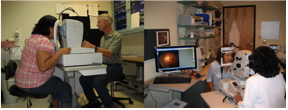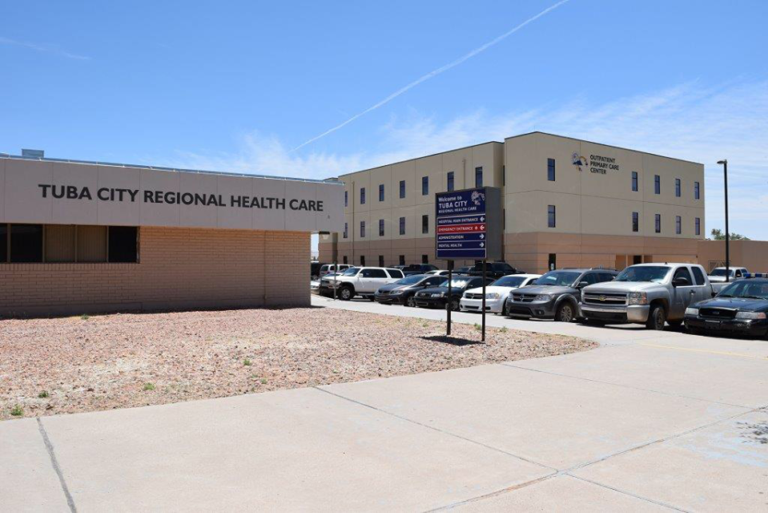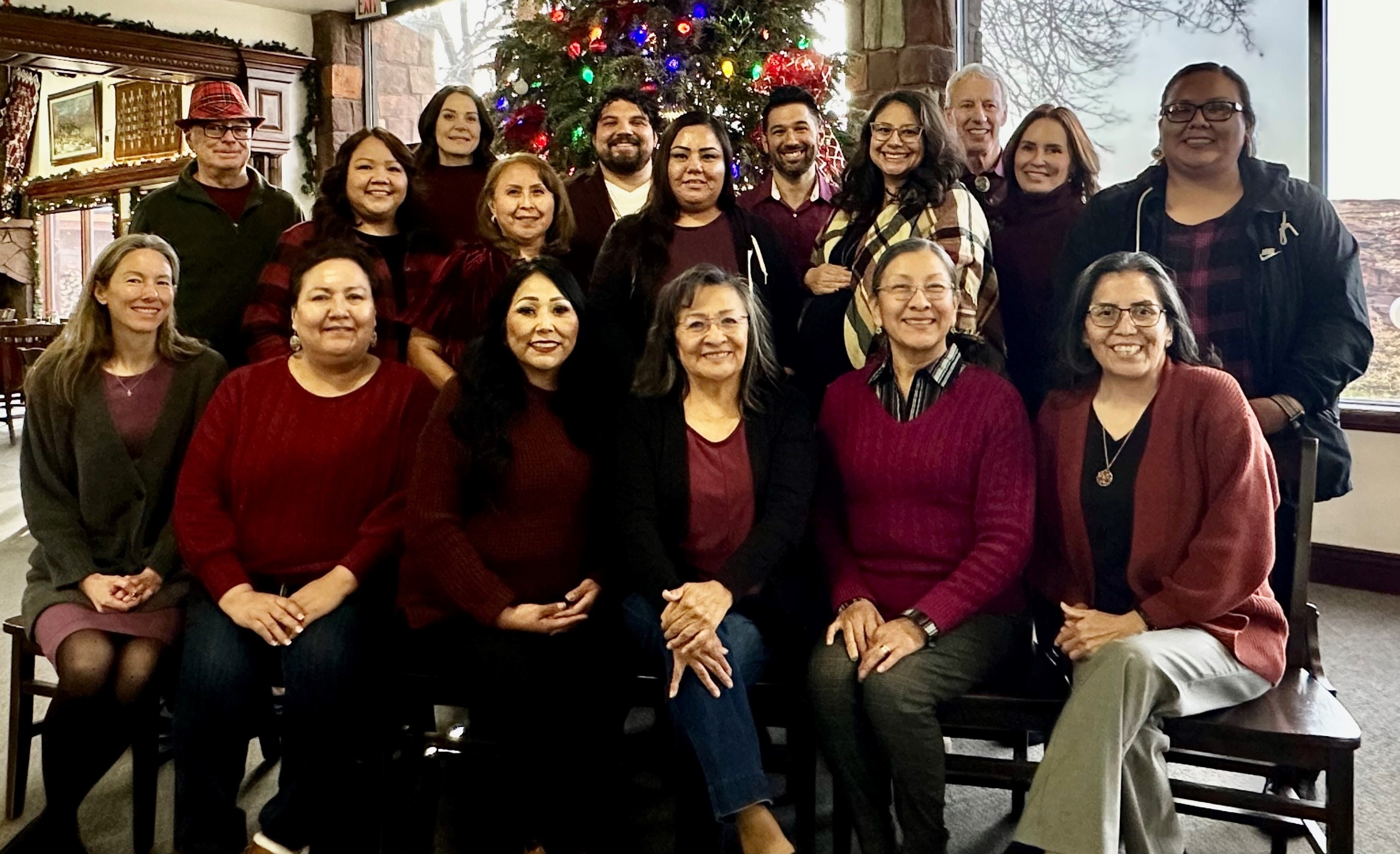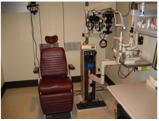Residency Programs
Tuba City Regional Health Care Corporation
Established: 2011
Positions: 1
Tuba City Regional Health Care Corporation
Indian Health Service
P.O. Box 600
Tuba City, AZ 86045
Program Faculty
Residency Coordinator: Breanne Flores, OD, FAAO
Attendings
Ronda Olson, OD, FAAO
Nancy Nichols, OD, FAAO
Richard Mitchell, OD
Mission Statement
The mission of Tuba City Regional Health Care Corporation residency program is to provide qualified postdoctoral optometry graduates with the advanced clinical education necessary to become practitioners who are able to deliver broad based primary care and ocular disease management in a hospital-based setting. This program will provide academic and clinical experiences that will enable residents to attain advanced competencies through expanding their knowledge base, strengthening their patient care skills, and participating in research and other scholarly activities. The residency program seeks to create an atmosphere that fosters an appreciation of culturally sensitive health care and the needs of an underserved population.

Program Description


Program Goals
- To strengthen the resident’s confidence and clinical skills in primary eye care and ocular disease management.
- To expand the resident’s knowledge and clinical proficiency with specialized diagnostic instrumentation.
- To provide advanced optometric clinical training in a hospital-based setting.
- To further develop the resident’s knowledge base by researching the best current scientific information and assisting in the integration and application into patient care.
- To instill in the resident the knowledge and skills necessary to become an effective educator and communicator in the medical community through the presentation of clinical experiences and/or research.
Program Objectives
- To provide the resident with an extensive primary care patient base.
- To strengthen the resident’s ability to diagnose, treat and manage ocular disease by exposing the resident to a diverse range of patient encounters including, but not limited to, the following: acute and chronic ocular disease, trauma, and ocular related systemic disease.
- To increase the resident’s experience with pre- and post-operative care.
- To develop skills in performing and interpreting retinal imaging with optical coherence tomography (OCT) and ophthalmic ultrasonography (B-scan).
- To develop skills in performing digital anterior segment and digital fundus photography.
- To establish competence in interfacing with practitioners in other health care disciplines and develop skills in providing coordinated care.
- To develop an understanding of the utilization of the support services that are available within a medical health care system.
- To observe ophthalmologic sub-specialists and other health care practitioners in a clinical setting.
- To instruct and advise the resident in the preparation and presentation of clinical lectures.
- To educate the resident on the process of manuscript preparation.
| Typical Daily or Weekly Schedule in Clinic |  |
|
Rotation through other Services
- The resident will have the opportunity to work directly with on-site ophthalmologist in a pre- and post-operative setting, and observe in the operating room.
- The resident will co-manage patients with other health specialties, and will be examining patients in the emergency room, adult care unit, and pediatric ward as necessary.
- The resident will also have the opportunity to observe the following ophthalmologic sub-specialists off site: retina, glaucoma and oculoplastics.
- As the residency progresses, the resident will be given the opportunity to rotate through the various on-site disciplines: including internal medicine/family medicine, pediatrics, emergency room, and pharmacy.
Type and Number of Patients
- The main emphasis of the program is to further enhance the resident’s ability to properly assess and manage patients of all ages, which is best achieved with 80-85% of their time involved with direct patient care.
- It is expected that the resident will see a minimum of 1,200 patients during the course of their program.
- The resident will be afforded a multitude of patient encounters that will encompass all aspects of primary and secondary eye care, including the treatment and management of ocular disease, prescribing spectacles, ordering appropriate labs and imaging studies when indicated, and removing foreign bodies.
Teaching Responsibilities
The resident will be required to provide training and education updates to support staff and work with fourth year medical students who are rotating through the eye clinic.
Lecturing Opportunities
The resident will be required to present at the following: a continuing education lecture at a national optometry meeting or IHS Optometry meeting, a lecture to the TCRHCC medical staff as part of the noon-time CME program, and a lecture at Resident’s Day at the Arizona College of Optometry at Midwestern University.
Scholarly Activities
Thesis Paper
Preparation and completion of an original research project or case report suitable for presentation and publication.
Journal Clubs
Participation in the Navajo Area Indian Health Service (NAIHS) Residents Journal Club.
Grand Rounds
Grand Rounds are scheduled on the fourth Wednesday of every month at which the resident is required to present a case to the TCRHCC optometric staff and provide three recent journal articles pertaining to the latest research and practice patterns for the given topic.
Continuing Medical Education
The resident will be required to attend at least eight continuing medical education (CME) lectures that are held at the hospital during the lunch hour.
Additional Employment Opportunities
N/A
Salary
The annual residency salary is $99,444.80.
Benefits
| Health | Health insurance is offered through the hospital at an affordable monthly rate. |
| Holidays | The resident receives 12 observed holidays. |
| Educational Travel | The resident is allowed 5 paid days for continuing education and a $3,000 continuing education allowance (dependent on funding for fiscal year). |
| Vacation | The resident will accrue 6.153 hours of annual leave per pay period. |
| Liability | The IHS provides malpractice coverage under the federal tort claims act. |
Prerequisites
- Applicants must be citizens of the United States of America.
- Applicants must have earned an OD degree from a school or college of optometry accredited by the Council on Optometric Education prior to the beginning of the residency program.
- The applicant must apply through the Optometric Residency Matching Services, Inc. (ORMS) and follow the application guidelines. The deadline for application submission is January 30, 2026.
- Applicant must have taken and passed all applicable parts of the NBEO examinations, including the TMOD.
- Applicants must provide TCRHCC residency program with the following: a letter of intent with goals outlined, official transcripts of all optometric education, official copies of NBEO scores, three letters of reference and a curriculum vitae.
- Ranking is as follows:
- Interview 20%
- GPA 20%
- NBEO scores 20%
- Letter of Intent 10%
- Letter of Recommendations 20%
- Special qualities/characteristics 20%
- Maturity
- Professionalism
- Communication Skills
- Attitude
- Ability to get along with others
- An interview is mandatory either in person or via telephone.
- Applicants must be eligible for licensure as an optometrist in a state, territory, or commonwealth of the United States, or in the District of Columbia.
- All residency program applicants will be evaluated without regard to sex, race, color, creed, age, national origin, or non-disqualifying physical disabilities.
Requirements for Residency Completion
- The resident is required to provide patient care services at a level deemed satisfactory to the Program Coordinator and faculty, in line with the highest levels of current optometric standards of practice. Performance must continue at appropriate levels throughout the program, as evidenced by favorable evaluations.
- The resident is required to submit a paper based upon original research, literature review, and/or clinical case or cases suitable for publication in a peer reviewed optometric journal.
- Participation in scheduled scholarly activities designed to meet the mission, goals, and objectives of the program. This includes:
- Completion of the TCRHCC required reading list and discussions
- Participation in the Navajo Area Indian Health Service Resident’s Journal Club
- Presentation of one continuing education lecture to the TCRHCC medical staff
- Presentation of a case report at the annual IHS Optometry Meeting
- Presentation of a case report at the annual Resident’s Day program at Midwestern University
- Timely submission of required paperwork, including case reports and quarterly/end of the year residency evaluations, is expected as scheduled by the Residency Coordinator and SCCO at MBKU. The resident is required to keep a detailed log of all program activities, which will be reviewed by the SCCO at MBKU’s Assistant Dean of Residencies and the Program Coordinator. Quarterly requirements will also include resident participation in formal clinical quality assurance measures consisting of quarterly chart reviews and competency assessments. These include:
- Resident encounter log
- Resident activity log
- Resident referral log
- Resident reading log
- Resident faculty evaluations
- Resident coordinator evaluation
- Resident program evaluations
- Quarterly chart reviews
- Clinical competency checklist
Program Accreditation
The Accreditation Council on Optometric Education (ACOE) has granted the Tuba City Regional Health Care Corporation Residency Program the accreditation status of “Accredited.” The next scheduled site visit will take place in December 2029. Accredited is a classification granted to an educational program indicating that the program generally meets the Standards for accreditation. For more information, see the ACOE’s website at www.theACOE.org or contact the ACOE at accredit@theacoe.org.
Accreditation Council on Optometric Education
243 N. Lindbergh Blvd., Suite 301
St. Louis, MO 63141
Phone: 1-800-365-2219
E-mail address: accredit@theacoe.org
Housing
Government housing is available at a low monthly rate.
Local Activities & Attractions
- Tuba City is located on the western part of the Navajo Reservation, approximately 75 miles north of Flagstaff, Arizona.
- The unique community of Tuba City offers numerous outdoor and cultural opportunities.
- Camping, hiking, mountain biking, downhill and cross-country skiing, white water rafting and kayaking are available.
- The geologic wonders of the Colorado plateau nearby include the Grand Canyon, Bryce and Zion National Parks, Mesa Verde, Canyonlands and Arches National Parks, and Lake Powell.

Contact Info
Breanne Flores, OD, FAAO
Residency Coordinator
Eye Services Department
Tuba City Regional Health Care Corporation
P.O. Box 600
Tuba City, AZ 86045
928.283.2753 • Email: Breanne.flores@tchealth.org
Judy W.H. Tong, OD, FAAO
Assistant Dean of Residencies
Southern California College of Optometry at
Marshall B. Ketchum University
2575 Yorba Linda Blvd.
Fullerton, CA 92831-1699
714.449.7429 • Fax: 714.992.7811 • Email: jtong@ketchum.edu
